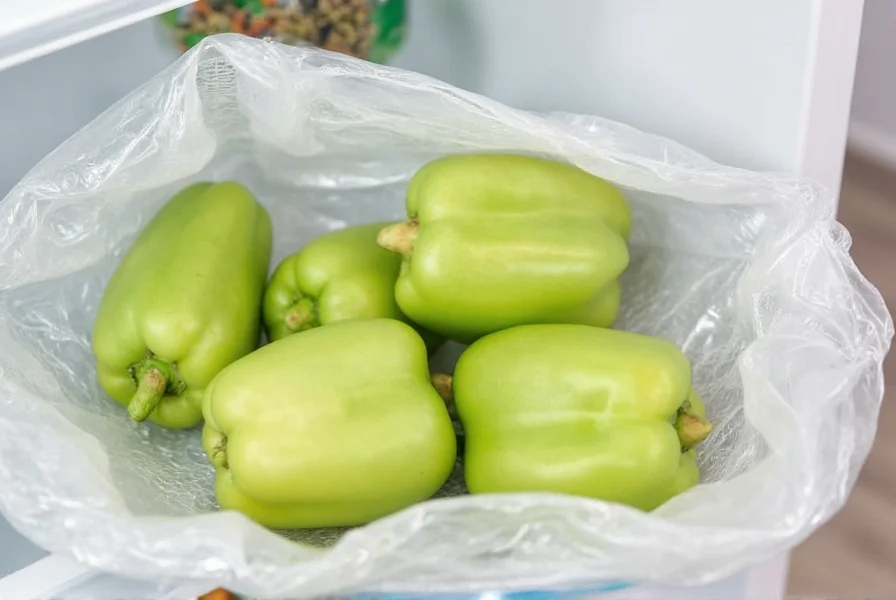When you encounter a light green pepper at the grocery store or in your garden, you're looking at peppers in an early developmental stage. Unlike the vibrant red, yellow, or orange bell peppers that have fully ripened on the vine, light green varieties are picked earlier, resulting in distinct flavor and nutritional characteristics that make them valuable in culinary applications.
Understanding Light Green Pepper Varieties
Not all green peppers are the same. The term "light green pepper" typically refers to two main categories:
- Immature bell peppers - Harvested before full ripening when they're still pale green
- Specific pepper varieties - Certain cultivars naturally maintain a lighter green hue even when mature
The most common light green peppers you'll find include standard bell peppers in their early stage, banana peppers, and certain sweet Hungarian varieties. These differ significantly from dark green bell peppers, which have been allowed to develop more chlorophyll but still haven't begun the ripening process to other colors.
Flavor Profile and Culinary Applications
Light green peppers offer a unique taste experience that sets them apart from their more colorful relatives:
| Pepper Type | Flavor Characteristics | Ideal Culinary Uses |
|---|---|---|
| Light green bell peppers | Mild bitterness, crisp texture, subtle grassy notes | Stir-fries, salads, stuffed peppers, sandwiches |
| Banana peppers (light green) | Slightly tangy, moderate sweetness, minimal heat | Pickling, pizza toppings, sandwiches, relishes |
| Sweet Hungarian peppers | Delicate sweetness with mild pepper flavor | Traditional European dishes, roasting, frying |
Chefs often prefer light green peppers for dishes where they want the pepper flavor to complement rather than dominate. Their milder bitterness works well in Mediterranean cuisine, Asian stir-fries, and fresh salsas where a pronounced sweet pepper flavor would be overwhelming.

Nutritional Benefits of Light Green Peppers
While red and yellow bell peppers contain higher vitamin C levels due to longer ripening, light green peppers still offer significant nutritional value:
- Excellent source of vitamin C (providing about 150% of daily value per large pepper)
- Rich in vitamin K for blood health and bone metabolism
- Contains vitamin B6 and folate for metabolic functions
- Provides dietary fiber for digestive health
- Contains antioxidants like lutein for eye health
Interestingly, light green peppers contain different antioxidant compounds compared to their ripened counterparts. While red peppers develop high levels of beta-carotene, light green varieties contain more lutein and zeaxanthin, which are particularly beneficial for eye health.
Selecting and Storing Light Green Peppers
When choosing light green peppers at the market, look for these quality indicators:
- Firm, taut skin without wrinkles or soft spots
- Vibrant, consistent pale green color (avoid yellowing)
- Heavy weight for their size, indicating freshness
- Fresh, green stem without browning
For optimal storage, keep light green peppers in the crisper drawer of your refrigerator. Place them in a perforated plastic bag to maintain humidity while allowing airflow. Properly stored, they'll remain crisp and fresh for 7-10 days. Avoid washing until ready to use, as excess moisture accelerates spoilage.

Cooking with Light Green Peppers: Expert Tips
To maximize flavor when cooking with light green peppers, consider these professional kitchen techniques:
- Dry heat methods - Roasting or grilling develops natural sugars while preserving some crispness
- Quick cooking - Sauté just until tender-crisp to maintain texture and prevent bitterness
- Pairing suggestions - Complement with acidic ingredients like lemon juice or vinegar to balance mild bitterness
- Seed removal - Removing seeds and white membranes reduces potential bitterness
For raw applications like salads or crudités, slice light green peppers and soak in ice water for 15-20 minutes to enhance crispness. This simple technique makes them particularly refreshing in summer dishes.
Common Questions About Light Green Peppers
Are light green peppers just unripe bell peppers?
Most light green peppers are indeed immature bell peppers harvested before they develop their characteristic red, yellow, or orange colors. However, some specific varieties like certain banana peppers and Hungarian sweet peppers naturally maintain a lighter green hue even when fully mature.
Why do light green peppers taste more bitter than colored peppers?
The mild bitterness in light green peppers comes from higher chlorophyll content and lower sugar development compared to fully ripened peppers. As peppers mature and change color, their sugar content increases while chlorophyll breaks down, resulting in sweeter flavors.
Can I ripen light green peppers at home to change their color?
Yes, you can ripen most light green bell peppers at home by placing them in a paper bag with a ripe apple or banana at room temperature. The ethylene gas these fruits produce will encourage ripening. However, this process works best with peppers that were nearly mature when harvested and may take 3-7 days.
Are light green peppers less nutritious than red or yellow peppers?
While red and yellow peppers contain higher vitamin C and beta-carotene due to longer ripening, light green peppers offer different nutritional benefits. They contain more lutein and zeaxanthin (beneficial for eye health) and maintain higher levels of certain antioxidants found in chlorophyll-rich vegetables. All pepper colors provide valuable nutrients.
What's the difference between light green and dark green peppers?
Light green peppers are typically harvested earlier than dark green varieties. Dark green peppers have developed more chlorophyll but haven't yet begun the ripening process to other colors. Light green peppers tend to be slightly sweeter with less bitterness compared to their darker counterparts, which have a more pronounced grassy flavor.










 浙公网安备
33010002000092号
浙公网安备
33010002000092号 浙B2-20120091-4
浙B2-20120091-4